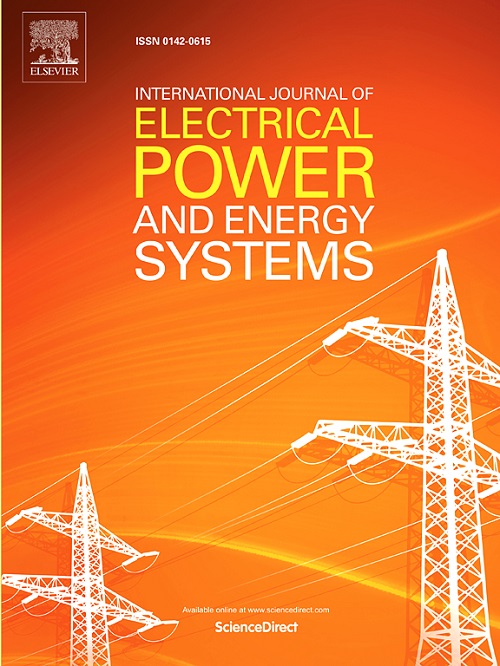Dual-attention-based spatio-temporal detection model against false data injection attacks in smart grids
IF 5
2区 工程技术
Q1 ENGINEERING, ELECTRICAL & ELECTRONIC
International Journal of Electrical Power & Energy Systems
Pub Date : 2025-09-20
DOI:10.1016/j.ijepes.2025.111156
引用次数: 0
Abstract
As the next-generation power grid, the Smart Grid integrates digitization and intelligence into the system. However, its advanced intelligence also introduces potential cybersecurity risks. In particular, False Data Injection Attacks (FDIAs) exploit the Smart Grid’s heavy reliance on real-time data. By spoofing sensor measurements or manipulating network communications, these attacks inject malicious information into the grid to disrupt the topological structure of the power system. To address this challenge, this paper proposes a Dual-Attention Spatial-Temporal Fusion Network (DASTFN) for FDIA detection in Smart Grids, leveraging Graph Attention Networks (GAT) and Temporal Convolutional Networks (TCN). Given the complexity of network topology, DASTFN introduces a dual-attention mechanism that assigns varying importance to each node and dynamically aggregates information from neighboring nodes by learning adaptive weights. This enables more precise capture of mutual influences and relationships between nodes. Meanwhile, TCN automatically extracts temporal features from grid data through its causal dilated convolution property, effectively detecting attacks that leave temporal traces in sequential data. The proposed DASTFN model comprehensively captures spatial–temporal characteristics of grid data, enhancing both detection accuracy and computational efficiency. Simulations on IEEE 14-bus and 118-bus systems demonstrate its superiority over existing methods in terms of ablation analysis, detection performance, and robustness under adversarial conditions.
基于双注意力的智能电网虚假数据注入时空检测模型
作为下一代电网,智能电网将数字化和智能化融为一体。然而,其先进的智能也带来了潜在的网络安全风险。特别是,虚假数据注入攻击(FDIAs)利用了智能电网对实时数据的严重依赖。通过欺骗传感器测量或操纵网络通信,这些攻击将恶意信息注入电网以破坏电力系统的拓扑结构。为了解决这一挑战,本文提出了一种双注意时空融合网络(DASTFN),用于智能电网中的FDIA检测,利用图注意网络(GAT)和时间卷积网络(TCN)。考虑到网络拓扑的复杂性,DASTFN引入了双注意机制,为每个节点分配不同的重要性,并通过学习自适应权值来动态聚合相邻节点的信息。这样可以更精确地捕捉节点之间的相互影响和关系。同时,TCN利用其因果扩展卷积特性自动从网格数据中提取时间特征,有效检测序列数据中留下时间痕迹的攻击。提出的DASTFN模型全面捕捉网格数据的时空特征,提高了检测精度和计算效率。在IEEE 14总线和118总线系统上的仿真表明,该方法在烧蚀分析、检测性能和对抗条件下的鲁棒性方面优于现有方法。
本文章由计算机程序翻译,如有差异,请以英文原文为准。
求助全文
约1分钟内获得全文
求助全文
来源期刊
CiteScore
12.10
自引率
17.30%
发文量
1022
审稿时长
51 days
期刊介绍:
The journal covers theoretical developments in electrical power and energy systems and their applications. The coverage embraces: generation and network planning; reliability; long and short term operation; expert systems; neural networks; object oriented systems; system control centres; database and information systems; stock and parameter estimation; system security and adequacy; network theory, modelling and computation; small and large system dynamics; dynamic model identification; on-line control including load and switching control; protection; distribution systems; energy economics; impact of non-conventional systems; and man-machine interfaces.
As well as original research papers, the journal publishes short contributions, book reviews and conference reports. All papers are peer-reviewed by at least two referees.

 求助内容:
求助内容: 应助结果提醒方式:
应助结果提醒方式:


